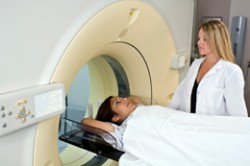Gynecologic Problems
Click on the links below to learn more about the Gynecologic Problems that we treat:
- Pelvic Pain
- Pelvic Inflammatory Infection
- Menorrhagia
- Amenorrhea/Absence of Menstruation
- Dysfunction Uterine Bleeding
- Cervical Dysplasia
- Heavy Menstrual Bleeding
- Menstrual Disorders
- Vaginal Discharge
- Vaginal Infection
- Vulvodynia
- Yeast Infection
- Endometriosis
- Dysmenorrhea
- Vaginitis
- Ovarian Cysts
- Polycystic Ovary Syndrome
- Human Papillomavirus (HPV)
- Uterine Fibroids
- Genital Herpes
- Cancer of the Cervix
- Cancer of the Ovary
- Premenstrual Syndrome (PMS)
- Pap Tests & Abnormal Pap Test Results
- Abnormal Uterine Bleeding
- When Sex is Painful
- Benign Breast Problems and Conditions
Pelvic Pain
 Chronic female pelvic pain is classified as pain below the belly button lasting longer than 6 months. The pain can range from mild to severe, dull to sharp and may come and go or be constant. It is usually a symptom of another condition. Pelvic pain can be a result of several different causes, many of which can be successfully treated.
Chronic female pelvic pain is classified as pain below the belly button lasting longer than 6 months. The pain can range from mild to severe, dull to sharp and may come and go or be constant. It is usually a symptom of another condition. Pelvic pain can be a result of several different causes, many of which can be successfully treated.
Pelvic Inflammatory Infection
Pelvic inflammatory disease (PID) is an infection of the reproductive organs in women usually caused by the same sexually transmitted bacteria that causes gonorrhea and chlamydia. PID spreads from the vagina to the uterus, ovaries and fallopian tubes and can lead to infertility or complications during pregnancy.
PID is almost always accompanied by a sexually transmitted disease and can develop after having unprotected sex, especially with more than one partner. Bacteria can sometimes enter the vagina from inserting an IUD, childbirth, miscarriage or abortion. Women under the age of 25 are most often affected. Most cases of PID can be treated with antibiotics. More severe cases may require hospitalization or even surgery. PID can often be prevented by practicing safe sex.
Menorrhagia
Heavy menstrual bleeding is a common problem that most women experience at some point in their life. Excessive menstrual bleeding on a regular basis is classified as a condition called menorrhagia, which can cause troubling symptoms. If conservative methods are unsuccessful, surgery may be required to treat menorrhagia, including dilation and curettage, endometrial ablation and hysterectomy. With the proper support, most women can control the symptoms of menorrhagia without the need for surgery.
Amenorrhea/Absence of Menstruation
Amenorrhea is a condition that involves the absence of menstrual periods. Some women may never start having a period, while others may stop suddenly. While amenorrhea is a symptom and not a disease, it can be worrisome for many women. But this condition can usually be treated by identifying and treating the underlying cause.
Dysfunction Uterine Bleeding
Dysfunctional uterine bleeding (DUB) is abnormal bleeding that typically occurs at the beginning and end of the reproductive years because of hormone changes. DUB often occurs as a result of high estrogen levels that are not balanced by an appropriate level of progesterone. This stops an egg from being released and thickens the uterine lining, causing it to shed irregularly.
Dysfunctional uterine bleeding occurs most often in women over the age of 45, as well as in many adolescent girls. It is classified as periods that occur more often than every 21 days or fewer than every 35 days, last more than 7 days and are heavier than normal.
Your doctor will rule out any other causes of abnormal bleeding in order to diagnose dysfunctional uterine bleeding. Treatment for DUB depends on your age, severity of bleeding and whether or not you wish to become pregnant. The treatment options may include oral contraceptives, medication to stimulate ovulation, dilation and curettage or even a hysterectomy.
Cervical Dysplasia
Cervical dysplasia refers to abnormal cell growth on the outside of the cervix. While cervical dysplasia itself is not necessarily cancerous, it is considered precancerous. Cervical dysplasia usually appears with no noticeable symptoms, remaining unnoticed until a gynecological examination is done.Severe cases of cervical dysplasia may require cryosurgery, electrocauterization, or the LEEP procedure to remove the abnormal growth. Your gynecologist will develop a customized treatment plan based on your individual condition.
Heavy Menstrual Bleeding
Heavy menstrual bleeding is a common problem that most women experience at some point in their life. Excessive menstrual bleeding on a regular basis is classified as a condition called menorrhagia, which can cause troubling symptoms. If conservative methods are unsuccessful, surgery may be required to treat menorrhagia, including dilation and curettage, endometrial ablation and hysterectomy. With the proper support, most women can control the symptoms of menorrhagia without the need for surgery.
Menstrual Disorders
 Menstrual disorders can turn your monthly period from a minor hassle to a major, debilitating inconvenience. These disorders can cause physical and emotional symptoms and can severely disrupt your daily life for days or weeks at a time. Menstrual cycle disorders can cause symptoms like:
Menstrual disorders can turn your monthly period from a minor hassle to a major, debilitating inconvenience. These disorders can cause physical and emotional symptoms and can severely disrupt your daily life for days or weeks at a time. Menstrual cycle disorders can cause symptoms like:
- Heaving bleeding
- Abdominal pain
- Nausea and vomiting
- Missed periods
- Mood swings
Vaginal Discharge
Vaginal discharge is a common substance excreted from the vagina during different stages of the menstrual cycle. The consistency of discharge can vary as your cycle progresses and is usually most abundant before ovulation, as well as while breastfeeding or when sexually aroused. Vaginal discharge is considered normal for most women, especially those of childbearing age. Normal discharge is usually clear or white and odorless.
It is important to note any changes to vaginal discharge, as this may indicate an infection or other type of problem. Changes such as an increase in amount of discharge; different color or smell; or irritation, itchiness or burning around the vagina could be signs of a problem. If you are experiencing any of these signs, talk to your doctor as soon as possible.
Vaginal Infection
Bacterial vaginosis (BV) is an infection of the vagina in which the balance of bacteria is disrupted and there is more harmful bacteria present than beneficial bacteria. BV is the most common vaginal infection in women of childbearing age, and is also common in pregnant women.
Vulvodynia
Vulvodynia is classified as chronic vulvar pain or discomfort, including burning, stinging, irritation or rawness of the female genitalia. The word “vulvodynia” actually means “painful vulva.” This condition can severely impact the quality of life for affected women and may prohibit participation in sexual activity, physical exercise and even social activities. Treatment for vulvodynia does not cure the condition, but instead helps to relieve symptoms.
Yeast Infection
A vaginal yeast infection is a common condition that affects over 75 percent of women at least once in their life, caused by a fungus called Candida albicans. While this type of fungus exists naturally in the vagina, too much of it can cause a vaginal infection. A yeast infection causes itching, burning, redness and irritation in the vaginal area, as well as a white discharge that looks similar to cottage cheese and pain during sexual intercourse.
Endometriosis
Endometriosis is a medical condition in women in which the uterine lining (endometrium) moves out of the uterus and into other parts of the pelvic area such as the ovaries, bowels or behind the uterus. This condition affects about five million women in the US and is one of the most common health problems. It is generally not a serious or harmful condition, but can be painful and may interfere with your daily life. Endometriosis can be diagnosed through an ultrasound or MRI. There is no cure for the disease, but symptoms can be treated depending on their type and severity. Talk to your doctor today if you think you may be experiencing endometriosis.
Dysmenorrhea
 Dysmenorrhea is a menstrual disorder that involves painful cramps with or without an underlying gynecological disorder. Over 50 percent of women with a menstrual period suffer from primary dysmenorrhea, which has no underlying cause and is part of the regular menstrual cycle for many. Secondary dysmenorrhea only affects about 25 percent of women with dysmenorrhea symptoms, and is a result of conditions such as endometriosis or uterine fibroids.
Dysmenorrhea is a menstrual disorder that involves painful cramps with or without an underlying gynecological disorder. Over 50 percent of women with a menstrual period suffer from primary dysmenorrhea, which has no underlying cause and is part of the regular menstrual cycle for many. Secondary dysmenorrhea only affects about 25 percent of women with dysmenorrhea symptoms, and is a result of conditions such as endometriosis or uterine fibroids.
What are the Symptoms?
Women with dysmenorrhea may experience:
- Abdominal pain
- Backache
- Nausea
- Vomiting
- Diarrhea
- Headache
- Dizziness
These symptoms can be continuous or may come and go throughout the course of the period. Most women experience the worst symptoms 24 hours after the start of the period, and ending after two days.
How is Dysmenorrhea Treated?
Primary dysmenorrhea can usually be treated with anti-inflammatory drugs such as aspirin or ibuprofen to help lessen the contractions of the uterus and reduce symptoms. These medications should be taken when bleeding begins and continued for a few days.
Treatment for secondary dysmenorrhea focuses on treating the underlying cause of the condition, and may vary to include drug therapy or surgical procedures. A hysterectomy, a surgical procedure to remove the uterus, is often considered a last resort treatment for severe or unresponsive cases.
Vaginitis
Vaginitis is a common inflammation of the vagina that causes itching, pain and discharge. Patients may develop this condition as a result of a change in the vaginal bacteria levels or from a yeast infection or sexually-transmitted infection. Women who have new or multiple sex partners, use an intrauterine device, have diabetes or experience hormonal changes may be at an increased risk for developing vaginitis. While vaginitis is not usually a serious condition, it may put patients at risk for pregnancy complications or HIV.
How is Vaginitis Treated?
Treatment for vaginitis depends on the cause of the condition. Certain oral or topical medications are often effective in relieving symptoms and clearing any infection, which can often be achieved in about a week. Vaginitis caused by a yeast infection may be treated with over-the-counter products, but it is important for patients to see their doctor to confirm this diagnosis. Low hormonal levels may be corrected with estrogen supplements, in the form of vaginal creams, tablets or rings.
Your doctor will recommend the most effective treatment option for your individual condition.
Ovarian Cysts
An ovarian cyst is a fluid-filled sac found on the ovaries, which are the organs that produce eggs and female hormones and affect our body’s appearance, menstrual cycle and pregnancy. The eggs that are produced each month are grown in tiny sacs called follicles. After these sacs release the egg, they dissolve and then turn into corpus luteum which produces hormones.
Functional cysts can form from these empty sacs and cause them to grow rather than dissolve. These cysts form from the follicle or the corpus luteum, but both disappear within a few months. They are rarely cancerous but can cause mild symptoms.
What are the Symptoms?
Other types of cysts can form as a result of disease or from the egg not being released. These may be larger and more painful. While some ovarian cysts don’t cause any symptoms, others may experience:
- Pressure, swelling or pain in the abdomen
- Pelvic pain
- Pain during sex
- Weight gain
- Abnormal bleeding
- Nausea or vomiting
How are Ovarian Cysts Diagnosed?
Ovarian cysts can usually be diagnosed during routine pelvic exams. An ultrasound or blood test may also be used to determine the size and type of the cyst. Many cysts will go away on their own, so initial treatment may just be to wait and see if the size changes. Surgery to remove the cyst may be performed in those that do not change or cause pain. If you think you have a cyst, schedule a pelvic exam right away.
Polycystic Ovary Syndrome
Polycystic ovary syndrome (PCOS) is a common condition that involves enlarged ovaries that may contain many cysts and produce high levels of male hormones. This condition affects one in every ten women in the US and is the leading cause of infertility in women. The specific cause of PCOS is not known, but it involves an interruption in the reproductive cycle.
What are the Symptoms of PCOS?
PCOS causes many different symptoms that can include:
- Irregular or no menstrual period
- Excess body hair
- Acne
- Enlarged ovaries with many cysts
- Infertility
- Obesity
How is PCOS Diagnosed?
If you are experiencing symptoms of PCOS, see your doctor right away. He or she may perform a blood test or ultrasound to diagnose the condition.
How is PCOS Treated?
Treatment for PCOS focuses on treating symptoms and preventing long-term damage. Since symptoms can vary, treatment may aim to regulate the menstrual cycle through insulin or medication, reduce excess hair growth through medication, help infertility, or remove hair.
If left untreated, PCOS can lead to diabetes, high blood pressure, cardiovascular disease or metabolic syndrome.
Human Papillomavirus (HPV)
 Human Papillomavirus (HPV) is a type of virus that causes genital warts. There are more than 100 different kinds of HPV, many of which can create a higher risk for cervical cancer. While some types can cause genital warts, others will show no symptoms but will eventually lead to cancers of the cervix, vulva, vagina and anus.
Human Papillomavirus (HPV) is a type of virus that causes genital warts. There are more than 100 different kinds of HPV, many of which can create a higher risk for cervical cancer. While some types can cause genital warts, others will show no symptoms but will eventually lead to cancers of the cervix, vulva, vagina and anus.
The virus is often contracted through sexual contact, as well as from a pregnant woman to her child during delivery, and affects over 20 million people in the US, with an estimated six million people becoming infected each year. It is estimated that at least half of all sexually active people will have HPV at some point in their lives.
Fortunately, many types of HPV can be successfully treated, while others can be managed to help patients prevent complications such as cervical cancer. Our doctors are experienced in treating all types of HPV to help restore patients back to health and help them maintain their normal life .
What are the Symptoms of HPV?
Symptoms of HPV infection may vary depending on the type and severity of the infection. Many patients do not experience any symptoms, and will be clear of the disease within two years. In some cases, genital warts may develop, while more serious cases may cause cervical cancer, or cancer of the vulva, vagina, penis, anus or head and neck.
How Do You Diagnose HPV?
Since many types of HPV do not present any symptoms, regular testing is recommended to screen for cervical cancer and other complications of HPV. There is no standard test to detect HPV viruses, and many will go away on their own with no symptoms and no need for treatment. It is important for women to undergo regular Pap tests, as these can detect certain abnormalities that may signify HPV. If abnormalities are found, your doctor may perform a DNA test, which can test for 13 high-risk types of HPV.
If you notice any warts or lesions in the genital area, you should seek medical attention and undergo testing for HPV to receive any necessary treatment and prevent cervical or other types of cancer from developing.
What are the Complications?
Although most cases of HPV will go away on their own with no side effects or complications, certain types of HPV can develop into cervical, penile or anal cancer. These diseases are most treatable when detected early, so regular screening is important to maintaining your health.
How is HPV Treated?
While there is no cure for HPV, treatment for the symptoms caused by HPV, such as genital warts, cervical changes and cervical cancer is available. Treatment depends on the type of infection as well as the present symptoms, and may be administered at home or by your doctor.
Patients with genital warts may be treated with medications, creams, cryotherapy, electrocautery, laser treatment or surgery to remove the warts, although this does not completely cure the infection. Patients can still transmit HPV to a sexual partner.
Other types of lesions may also be treated with surgery, laser treatments or cryotherapy to prevent them from developing into cervical cancer. Your doctor will develop a personalized treatment plan for you based on your individual condition.
How Do You Prevent HPV?
There are several medical and life methods that can be used to prevent infection with HPV and reduce your risk of HPV. Women between the ages of 11 and 26 may receive protection from an HPV vaccine such as Cervarix or Gardasil, which protect against the types of HPV that cause cervical cancer. Gardasil can also be administered to males to protect against genital warts.
Practicing safe, protected sex by using a condom and being in a monogamous, faithful relationship can also reduce a person’s risk of developing HPV.
Uterine Fibroids
Fibroids, also known as myoma, are tumors that grow in the uterine walls. They are usually benign but can range in size and quantity. Uterine fibroids are most common in women in their 40s and early 50s. The cause of fibroids is unknown, but they may be affected by hormones and genetics. Most fibroids do not turn into cancer, but can lead to pregnancy complications.
What are the Symptoms of Uterine Fibroids?
In many cases, women do not experience symptoms from fibroids. Treatment may not be necessary for these cases. Other women may experience:
- Heaving bleeding
- Feeling of fullness
- Enlargement of abdomen
- Lower back pain
- Pain during sex
- Frequent urination
How are Uterine Fibroids Treated?
Treatment for these cases may include medication to relieve symptoms, or surgery for more severe cases. Surgeries can include a myomectomy to remove the fibroids or a hysterectomy to remove the uterus. Other treatment options are also available to keep symptoms at a minimum and preserve your overall health.
Genital Herpes
 Genital herpes is a sexually transmitted disease that affects up to one out of every five adolescents and adults in the US. Patients may acquire herpes simplex virus type 1 (HSV-1) or type 2 (HSV-2), most often as a result of sexual contact with a partner who is infected. This long-term infection often causes sores on the genitals, mouth or lips, and may be transmitted through genital-genital or genital-oral contact.
Genital herpes is a sexually transmitted disease that affects up to one out of every five adolescents and adults in the US. Patients may acquire herpes simplex virus type 1 (HSV-1) or type 2 (HSV-2), most often as a result of sexual contact with a partner who is infected. This long-term infection often causes sores on the genitals, mouth or lips, and may be transmitted through genital-genital or genital-oral contact.
While herpes cannot be cured, there are several treatment options available to relieve symptoms and reduce emotional distress. Patients can still engage in sexual relationships without infecting their partner. Our doctors understand your worries and frustrations in dealing with herpes and other STDs, and can provide effective, compassionate care so that you can live a happy, healthy life.
What are the Symptoms of Genital Herpes?
Most patients affected with genital herpes experience little to no symptoms from this condition. When symptoms do occur, they often involve one or more blisters on or around the genital area. While these outbreaks usually come and go over the course of many months or years, the infection remains present in the body. Sores can also appear on the mouth or lips in patients with HSV-1, usually as a result of mouth-to-genital contact.
Some patients with genital herpes may also experience flu-like symptoms such as fever and swollen glands during the initial infection. Outbreaks may occur four to five times during the first year of infection, but tend to decrease in frequency over time.
In some patients, herpes infections can cause extremely painful genital sores that may interfere with the patient’s everyday life. Symptoms are usually most severe in patients with suppressed immune systems and in babies that are infected while in the womb. Some patients with herpes may be more susceptible to HIV infection, the virus that causes AIDS.
How is Genital Herpes Diagnosed?
Your doctor can diagnose genital herpes by examining active sores and taking a small sample to be analyzed in a lab. If you are not experiencing any symptoms or are in between outbreaks, a blood test may be performed to confirm diagnosis.
You may also undergo tests to detect other STDs, such as chlamydia, gonorrhea or HIV, as some patients are often infected with more than one condition.
What are the Complications of Genital Herpes?
For most patients, genital herpes does not lead to any serious conditions, instead remaining a long-term manageable condition. This condition may put patients at an increased risk of contracting other STDs, developing meningitis or developing urinary bladder retention.
Pregnant women, with genital herpes, are at risk for infecting their baby with the disease, especially if herpes is contracted during the pregnancy. If an infection is active at the time of delivery, a cesarean delivery may be performed to reduce the baby’s risk of infection.
How is Genital Herpes Treated?
While there is no cure for genital herpes, current treatments available can often help shorten and prevent outbreaks from occurring. These antiviral oral medications may include Zovirax, Famvir or Valtrex, and are taken only when patients are experiencing symptoms, although they may be taken on a more regular basis to stop outbreaks from occurring.
Patients with regular symptoms of herpes may benefit from daily suppressive therapy reducing their risk of spreading the infection to their sexual partner. Your doctor will determine which treatment approach is best for you after evaluating your condition.
How is Genital Herpes Prevented?
Preventing genital herpes can be accomplished by abstaining from sexual activity, getting tested with your partner and remaining in a mutually monogamous relationship with your partner once you have been tested. Correct and consistent use of latex condoms can reduce your risk of developing herpes, but is not a surefire prevention method. It is important to notify any sexual partners you have of your status in order to prevent infecting others. It is important to abstain from sexual activity with uninfected partners when lesions or other symptoms of herpes are present. Even if there are no symptoms present, a non-infected sexual partner may still become infected making the use of condoms at all times advisable.
Cancer of the Cervix
 Cervical cancer is one of the most common cancers among women and affects the cervix, the lower part of the uterus. It often occurs as a result of the human papillomavirus (HPV). According to the American Cancer Society, over 11,000 women in the US are diagnosed and nearly 4,000 die each year from cervical cancer.
Cervical cancer is one of the most common cancers among women and affects the cervix, the lower part of the uterus. It often occurs as a result of the human papillomavirus (HPV). According to the American Cancer Society, over 11,000 women in the US are diagnosed and nearly 4,000 die each year from cervical cancer.
What are the types of Cervical Cancer?
There are two main types of cervical cancer, squamous cell carcinoma and adenocarcinoma. Most people are affected by squamous cell carcinoma, which forms in the squamous cells on the surface of the cervix. Adenocarcinomas usually affect younger women and form from the mucus-producing glands of the cervix. These abnormal cells grow rapidly and can then accumulate to form a tumor. The specific cause of abnormal cells is not known, but it is linked to HPV infections.
What are the Risks?
HPV is a sexually transmitted infection and is found in most women who are diagnosed with cervical cancer. A woman with many sexual partners has a higher risk of acquiring HPV, and therefore a higher risk of cervical cancer as well. Other risk factors include smoking, a weak immune system, other sexually transmitted diseases and family history.
What are the Symptoms?
Since cervical cancer does not often produce symptoms, regular screening tests are essential to diagnosing the condition. Some women may experience vaginal bleeding, discharge or pelvic pain. Screening for cervical cancer is recommended for all women over the age of 21 or within three years of becoming sexually active. Your doctor will perform a Pap test to test the cells of the cervix for any abnormalities. An HPV DNA test may also be performed to determine whether you are infected with any of the related types of HPV. Additional testing may be needed to confirm the diagnosis of cervical cancer.
How is Cervical Cancer Treated?
Like many other conditions, early detection of cervical cancer can help in successfully treating the disease. Treating the early stages of the disease is much simpler and safer for all patients, which is why regular screenings are so important. Cervical cancer treatment can include surgery to remove the tumor, chemotherapy or radiation. Early cases can sometimes be treated through minimally invasive methods like a biopsy, cryosurgery or hysterectomy. The best type of treatment for you depends on the stage of the disease, which includes the size, depth and spreading of the abnormal cells. You can discuss your treatment options with your doctor.
How do I Reduce My Risk?
Routine Pap tests and practicing safe sex are the most effective ways to reduce your risk of cervical cancer. A vaccine for certain types of HPV is also available.
Cancer of the Ovary
Ovarian cancer occurs when normal cells in an ovary change and grow uncontrollably, forming a mass called a tumor. A tumor may be noncancerous or cancerous. Ovarian cancer is a rare type of cancer and is often not detected until it has spread to other areas of the body. When detected early, ovarian cancer can usually be cured with no major complications.
What are the Types of Ovarian Cancer Tumors?
There are three different types of tissue in the ovaries, and each tissue type can be affected by a different kind of cancer.
The ovary tissue types are:
- Epithelial carcinoma
- Germ cell carcinoma
- Stromal cell carcinoma
What are the Causes of Ovarian Cancer?
While the cause of ovarian cancer is not specifically known, some patients are at a higher risk of developing this disease than others.
What are the Risk Factors?
Risk factors for ovarian cancer may include:
- A personal or family history of cancer
- Over the age of 55
- Never been pregnant
- Taking menopausal hormone therapy
- Women who think they may be at risk for ovarian cancer should speak to their doctor.
How is it Diagnosed?
Ovarian cancer is often diagnosed during a routine pelvic exam, after a lump appears on an ultrasound image. If a lump is detected, your doctor will biopsy the lump to determine whether or not it is cancerous.
What are the Symptoms of Ovarian Cancer?
Patients with ovarian cancer usually do not experience any symptoms from the disease, especially in the early stages.
As the cancer grows, symptoms may include:
- Pain or pressure in the abdomen or pelvis
- Bloating
- Nausea
- Constipation
- Diarrhea
- Fatigue
- Shortness of breath
- Frequent urination
How is Ovarian Cancer Treated?
Treatment for ovarian cancer is usually addressed with surgery to remove the tumor, often by removing the entire ovary. This procedure is called an oophorectomy, and may be combined with other procedures to remove the uterus and fallopian tubes. Other treatment options for ovarian cancer may include chemotherapy or radiation therapy to kill remaining cancer cells and ensure that the disease has been removed from the body.
Premenstrual Syndrome (PMS)
 Premenstrual syndrome (PMS) is a group of symptoms that women commonly experience before their monthly menstrual period, usually going away after the period starts. About 85 percent of women suffer from at least one symptom of PMS during each menstrual cycle, although most cases are fairly mild and may not interfere with a woman’s normal activities. Severe cases of PMS may be diagnosed as premenstrual dysphoric disorder (PMDD).
Premenstrual syndrome (PMS) is a group of symptoms that women commonly experience before their monthly menstrual period, usually going away after the period starts. About 85 percent of women suffer from at least one symptom of PMS during each menstrual cycle, although most cases are fairly mild and may not interfere with a woman’s normal activities. Severe cases of PMS may be diagnosed as premenstrual dysphoric disorder (PMDD).
What are the Causes & Symptoms?
The specific cause of PMS is not known, but it is linked to the hormone changes involved in the menstrual cycle, and can also be affected by stress and emotional problems. While symptoms can vary for each woman, some of the common symptoms of PMS include:
- Breast swelling and tenderness
- Fatigue
- Difficulty sleeping
- Bloating
- Constipation or diarrhea
- Joint or muscle pain
- Acne
- Appetite changes
- Anxiety
- Depression
Women who suspect that they have a severe case of PMS and are seeking medical attention for their condition should monitor symptoms and their severity for a few months to help their doctor accurately diagnose the condition.
How is PMS Treated?
There are many treatments currently available for PMS, many of which involve simple lifestyle changes. Some of these changes may include calcium supplements, exercising regularly, avoiding salty or sugary foods, managing stress and avoiding smoking. Over-the-count medications such as ibuprofen or aspirin are often effective in relieving the symptoms of PMS as well. Prescription medication may be prescribed for severe cases of PMS.
Pap Tests & Abnormal Pap Test Results
As part of a woman’s routine pelvic exam, a Pap test is usually done. The Pap test involves extracting a small sample of cells from the cervix. These cells are examined, in a lab, for abnormal cell changes. The Pap test is used in diagnosing cervical cancer and human papillomavirus (HPV).
An abnormal Pap smear does not necessarily indicate a condition like HPV or cervical cancer. Pap smears detect any changes within the cervical cells, and abnormal results may indicate other conditions such as inflammation, hyperkeratosis, or atypical squamous or glandular cells. False positives are also common from Pap smears, but every precaution needs to be taken to ensure your health.
You will need a follow up examination to make sure that your abnormal cell changes have been resolved. Your doctor may perform a colposcopy in order to examine the cervix more closely and take a biopsy of any abnormal tissues. The level of treatment of treatment you need will depend on the evaluation of the abnormal cell changes.
Abnormal Uterine Bleeding
Certain chronic medical conditions, such as thyroid disorders and diabetes can also lead to abnormal uterine bleeding. Another common cause is a change in hormone levels. Often the result of high estrogen levels that are not balanced by an appropriate level of progesterone, hormone issues can prevent an egg from being released, thicken the uterine lining and cause it to shed irregularly.
How is Abnormal Uterine Bleeding Diagnosed?
To diagnose abnormal uterine bleeding, your doctor will evaluate your medical history, including the frequency and length of your menstrual periods. A physical examination will be performed, and your doctor may recommend a pregnancy test. You may also need blood tests and diagnostic imaging procedures such as ultrasound to view the uterus to determine the cause of the abnormal bleeding. In some cases, a biopsy or diagnostic examination of the uterus with a scope through the cervix or abdomen may be required.
How is Abnormal Uterine Bleeding Treated?
Treatment for abnormal uterine bleeding depends on the cause of the condition, but may include hormone supplements, such as certain forms of birth control medication, or a prescription for antibiotics. In other cases, the solution may involve the removal of an intrauterine device. For some patients, surgery may be necessary to treat cancer, polyps and other medical conditions. Abnormal uterine bleeding caused by a miscarriage also requires prompt medical attention to prevent serious complications.
When Sex is Painful
Dyspareunia is the medical term for painful sexual intercourse in women. This common condition affects nearly 75 percent of women at some point in their lives. Painful intercourse may be short-lived or may continue for a long period of time. It may occur just before, during or after intercourse, and the specific location and severity of the pain may vary. Women with dyspareunia may experience pain during penetration (which can also include tampon use), pain with certain partners, superficial pain or a burning or aching sensation.
What are the Causes of Painful Sex?
While this may seem like an embarrassing concern to discuss with your doctor, it is important to determine the cause of pain and make sure that any underlying condition is properly managed. Pain during sex may be a result of injury, inflammation, skin disorders, recent trauma, certain conditions, medications that have the side effect of diminishing sexual desire or from stress or psychological factors. Gynecologic disorders including endometriosis, hormonal changes that result in vaginal dryness, vaginitis or the growth of ovarian cysts may be responsible as well. Going through childbirth can also make sexual intercourse painful or uncomfortable for months afterward for some women.
How is the Cause of Painful Sex Diagnosed?
In order to determine the cause of pain during intercourse, your doctor will evaluate your medical history and perform a physical examination. Additionally, a pelvic exam can detect any skin irritation, infections or external or internal abnormalities that may indicate problems. Some patients may require further testing such as a laparoscopy to more closely view internal structures of the reproductive system.
How is Painful Sex Treated?
Fortunately, there are several treatments to relieve pain during intercourse, including simple techniques you can try with your partner, such as changing positions, speaking openly about how you feel and using lubricants. If the pain is caused by an underlying condition, such as an infection or disease, treating that condition will likely eliminate the pain. Psychotherapy sessions may be helpful for pain caused by emotional factors. Your doctor will develop a personalized treatment approach for each patient’s particular condition, taking into account its causes as well as their needs and comfort.
Benign Breast Problems and Conditions
There are a number of benign, or non-cancerous, conditions that may develop within the breasts. Below are some of the most common benign breast problems faced by women.
Cysts
Cysts are fluid-filled spaces in the breast. They may occur alone or in clusters in one or both breasts, and may be tiny and unnoticeable or large and painful to the touch. Benign cysts form in the glands and occasionally connective tissue in the breast. They are quite common, occurring in about half of all women, most frequently in the pre-menopausal years. Some benign cysts shrink or stop growing on their own. For those that do not, treatment is typically drainage via fine needle aspiration. Recurring cysts may be re-aspirated or removed.
Fibroadenomas
Fibroadenomas are lumps in the breast made of glandular and stromal (connective) tissue. They can occur at any age, but are most common in women in their 20s or 30s. Fibroadenomas vary in size from microscopic to several inches across but rarely cause pain or tenderness. Typical treatment is surgical removal. Removal may not be necessary for fibroadenomas that stop growing or shrink on their own.
Hyperplasia
Hyperplasia is an excessive growth of cells in the ducts or milk glands of the breast. If the cells found are abundant but fairly close to normal in appearance, it is considered usual hyperplasia. Alternatively, if the cells are abnormal, it is considered atypical hyperplasia, which increases the risk of developing breast cancer. Close monitoring is essential so patients will need to have breast examinations and mammograms more frequently as well as MRI scans to obtain a better view of affected tissue.
Papillomas
A papilloma is a benign tumor that can develop in the duct of the breast. These finger-like protrusions grow from the tissue either alone or in a group. Single, or solitary, papillomas are typically found in the nipple area and are frequently responsible for discharge from the nipple. On their own, they do not increase the risk of breast cancer. Multiple papillomas are usually located further from the nipple in small ducts. While they do not commonly produce nipple discharge, they may pose an elevated breast cancer risk. Papillomas will often require removal, along with a portion of the duct in which it was found.
